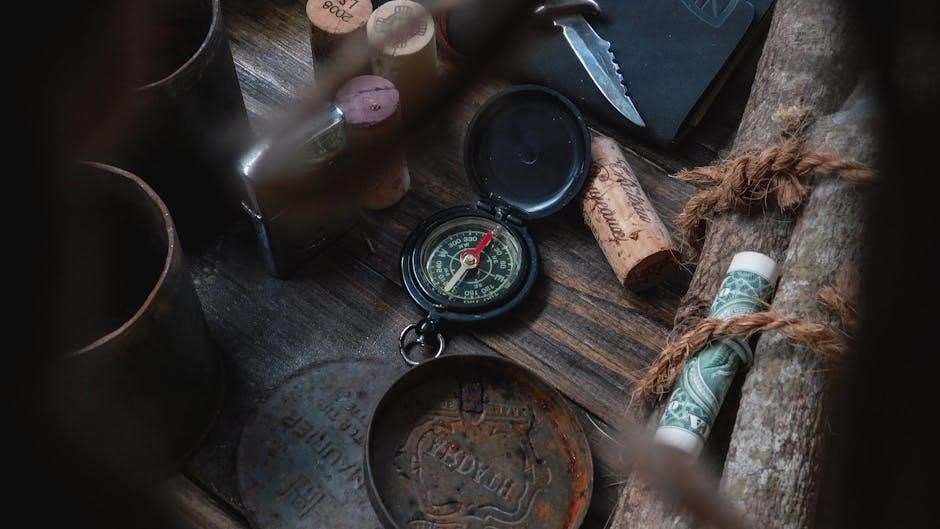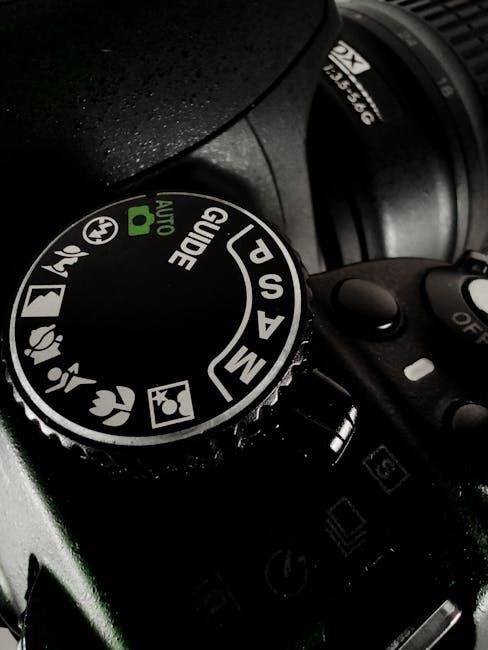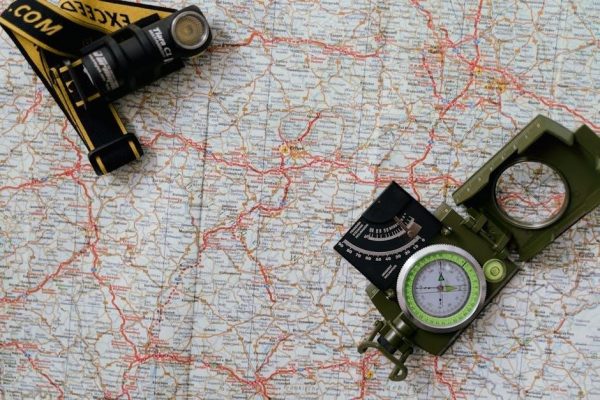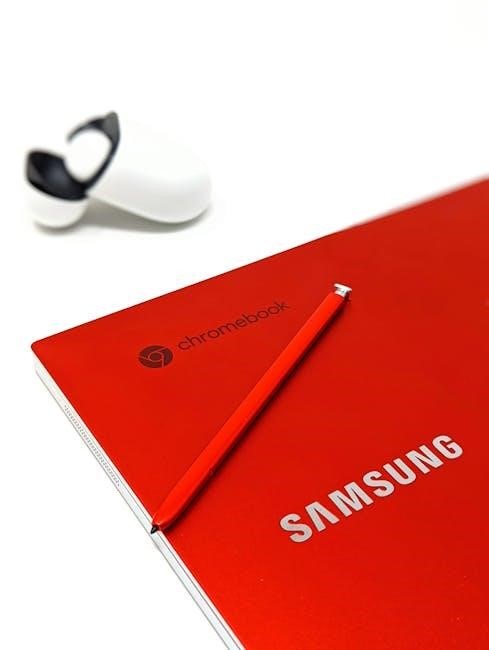Guide rods are essential components in firearm mechanics, with captured and uncaptured types offering distinct functionalities. They play a crucial role in managing recoil and spring systems, ensuring reliable performance and accuracy in pistols like Glock, Beretta, and USP models. Understanding their differences is vital for shooters seeking optimal reliability, customization, and recoil control.
What is a Guide Rod?
A guide rod is a critical component in firearms, primarily responsible for guiding the recoil spring as the slide cycles during firing. It ensures the spring remains aligned and controlled, facilitating smooth operation and reliable performance. Typically found in pistols, the guide rod plays a vital role in managing the energy generated by recoil, contributing to consistent cycling and accuracy. While designs vary, its fundamental purpose remains consistent: to stabilize and direct the spring’s movement. This simple yet essential part is crucial for maintaining the firearm’s functionality and efficiency, making it a key focus for shooters seeking optimal performance and reliability.
What is a Captured Guide Rod?
A captured guide rod is a type of guide rod where the recoil spring is permanently attached, ensuring it remains compressed even when the rod is removed from the slide. This design offers convenience during disassembly, as the spring stays in place, preventing it from launching unexpectedly. Captured guide rods are popular for their ease of installation and maintenance, making them a practical choice for many shooters. However, this design limits the ability to easily change spring weights, as the spring is securely captured within the rod. Despite this, the captured guide rod is favored for its reliability and simplicity in operation, particularly in standard shooting applications where spring adjustments are less frequent.

What is an Uncaptured Guide Rod?
An uncaptured guide rod is a type of guide rod where the recoil spring is not permanently attached, allowing it to decompress when the rod is removed from the slide. This design provides greater flexibility, as shooters can easily change spring weights without the hassle of unscrewing a captured system. However, this convenience comes with a trade-off: the spring can launch freely during disassembly, potentially causing inconvenience or damage. Uncaptured guide rods are favored by shooters who frequently experiment with different spring rates or require quick adjustments for specific shooting conditions, offering enhanced customization but requiring extra caution during maintenance.

Captured vs Uncaptured Guide Rods
The primary difference lies in spring attachment: captured rods have springs permanently secured, while uncaptured rods allow spring detachment. This affects assembly, maintenance, and customization for shooters.
5.1 Design Differences
Captured guide rods feature a spring permanently attached via a screw or plug, ensuring the spring remains compressed during disassembly. This design prevents the spring from flying off, offering convenience. Uncaptured guide rods, however, allow the spring to detach freely, enabling easier spring weight changes but requiring caution during disassembly. Captured rods are more compact, while uncaptured rods offer greater flexibility for customization. These design differences cater to different shooter preferences, with captured rods emphasizing ease of use and uncaptured rods prioritizing adaptability. Understanding these distinctions helps shooters choose the right rod for their specific needs and shooting style.
5.2 Functionality Differences
Captured guide rods provide seamless assembly and disassembly, as the spring remains attached, reducing the risk of losing components. This makes them ideal for casual shooters who prioritize convenience. Uncaptured rods, while requiring more care during disassembly, offer easier spring swaps, appealing to enthusiasts who experiment with different spring weights for customized performance. Captured rods are known for their reliability in retaining spring tension, whereas uncaptured rods allow for precise tuning of recoil dynamics. These functional differences make captured rods suitable for everyday use and uncaptured rods better for competitive shooters or those seeking tailored firearm performance.
5.3 Key Differences
The primary distinction lies in spring retention: captured guide rods secure the spring, preventing it from detaching during disassembly, while uncaptured rods allow the spring to release freely. Captured rods simplify maintenance but limit spring interchangeability, making them less versatile. Uncaptured rods offer flexibility for shooters who frequently adjust spring weights but require caution to avoid losing the spring. Captured rods are ideal for reliability and ease of use, whereas uncaptured rods cater to customization and precision tuning. These differences make each type suited for specific shooter preferences and needs, whether prioritizing convenience or performance optimization.

Pros and Cons
Captured guide rods offer ease of maintenance and reliability but limit spring interchangeability. Uncaptured rods provide flexibility for spring customization but can be inconvenient during disassembly. Each has trade-offs.
6.1 Captured Guide Rod Pros
Captured guide rods are highly praised for their ease of use and reliability. They simplify the disassembly process by keeping the recoil spring compressed, reducing the risk of springs flying out. This design ensures consistent reassembly, minimizing the chance of human error. Captured rods are ideal for shooters who prioritize convenience and reliability, as they eliminate the hassle of managing loose springs. Additionally, they are often preferred for concealed carry due to their simplicity and dependability, making them a practical choice for self-defense scenarios where firearm reliability is paramount.
6.2 Captured Guide Rod Cons
Captured guide rods have some notable drawbacks. One significant disadvantage is the difficulty in changing recoil springs, as the spring remains compressed and attached, requiring additional tools or steps to replace. This can be inconvenient for shooters who frequently experiment with different spring weights for optimal performance. Additionally, the captured design may complicate disassembly, potentially leading to frustration during maintenance. Some users also report issues with the captured mechanism under heavy use, where the screw or attachment point may loosen over time, affecting reliability. These factors make captured guide rods less ideal for shooters who prioritize easy spring swaps or prefer a more straightforward maintenance process.
6.3 Uncaptured Guide Rod Pros
Uncaptured guide rods offer several advantages, particularly for shooters who value flexibility and ease of maintenance. One major benefit is the ability to easily change recoil springs without the hassle of dealing with a compressed spring attached to the rod. This makes it ideal for shooters who experiment with different spring weights to optimize performance for specific loads or shooting styles. Additionally, the uncaptured design simplifies disassembly and assembly, as there is no need to manage a captive spring under tension. This ease of use is particularly appealing for competition shooters and those who frequently modify their firearms for improved accuracy and control.
6.4 Uncaptured Guide Rod Cons
Uncaptured guide rods have some notable drawbacks, primarily related to convenience and potential hazards. The primary issue is that the recoil spring is not secured to the rod, meaning it can launch free when the rod is removed, potentially causing damage or getting lost. This makes disassembly more dangerous and inconvenient, especially during routine maintenance. Additionally, reassembly requires careful alignment and compression of the spring, which can be challenging without proper tools or experience. While this design offers flexibility for spring changes, it introduces complexity and safety concerns, making it less ideal for casual shooters who prioritize ease of use and reliability.
Installation and Maintenance
Installing a captured guide rod is simpler due to the attached spring, reducing disassembly risks. Uncaptured rods require careful handling to prevent spring launch during maintenance.
7.1 Captured Guide Rod Installation
Installing a captured guide rod is relatively straightforward due to its integrated spring design. The spring remains attached to the rod, simplifying the process and reducing the risk of spring launch during disassembly. This design ensures that the spring stays compressed and aligned, making it easier to handle, especially for new shooters. The captured system minimizes the complexity of assembly, as there’s no need to manage a loose spring. This convenience makes it a preferred choice for those who value ease of installation and maintenance. The attached spring also provides better control during reassembly, ensuring proper alignment and function.
7.2 Uncaptured Guide Rod Maintenance
Maintenance for an uncaptured guide rod involves handling a detached spring, which can be challenging due to its tension. The spring may launch when the rod is removed, requiring caution to avoid damage or injury. Regular cleaning and inspection are essential to ensure smooth operation. Unlike captured rods, uncaptured systems allow easier spring replacement, as there’s no fixed attachment to manage. However, the detached spring adds complexity during disassembly and reassembly. Proper tools and techniques are recommended to safely handle the spring, making maintenance slightly more involved compared to captured designs. This trade-off offers flexibility for shooters who prioritize customization and spring interchangeability.

Impact on Recoil Management
Captured guide rods offer consistent recoil control, reducing muzzle rise, while uncaptured rods allow easier spring swaps but may compromise reliability under heavy use.
8.1 Captured Guide Rods and Recoil
Captured guide rods are designed to enhance recoil management by maintaining consistent spring tension. The permanent attachment of the recoil spring ensures predictable behavior during the firearm’s cycling process. This design minimizes muzzle rise and rearward movement, providing shooters with better control and faster target reacquisition. The captured system is particularly beneficial for competition shooters, as it reduces the likelihood of spring-related malfunctions. Additionally, the consistent recoil impulse aids in improving accuracy and shooter confidence. However, the fixed spring design can make spring changes more challenging, which may not be ideal for those experimenting with different spring weights for various shooting scenarios or ammunition types.
8.2 Uncaptured Guide Rods and Recoil
Uncaptured guide rods offer greater flexibility in recoil management, as they allow for easier spring weight changes, enabling shooters to tailor their firearm’s performance to specific needs. This design is particularly advantageous for competition shooters who frequently experiment with different recoil springs to optimize accuracy and control. However, the lack of a fixed spring attachment means the spring can become dislodged during disassembly, potentially leading to lost parts. While uncaptured rods provide excellent customization options, they require more careful handling during maintenance. Despite this, they remain a popular choice for shooters seeking precision and adaptability in their recoil systems.

Reliability and Performance
Both captured and uncaptured guide rods impact reliability and performance, with designs influencing recoil control, spring compatibility, and overall firearm operation. Each type offers unique advantages.
9.1 Captured Guide Rods
Captured guide rods are designed with the recoil spring permanently attached, ensuring ease of installation and preventing the spring from launching during disassembly. This design simplifies maintenance for users who prefer not to frequently change springs. Captured rods are ideal for concealed carry and duty use, as they enhance reliability by keeping the spring securely in place. They are less likely to malfunction during rapid cycling, making them a popular choice for self-defense and law enforcement applications. However, the fixed spring can limit customization for competition shooters who often experiment with different spring weights to optimize performance.
9.2 Uncaptured Guide Rods
Uncaptured guide rods offer greater flexibility, as they allow shooters to easily change recoil springs without the hassle of unscrewing a captured system. This makes them ideal for competition shooters who frequently experiment with different spring weights to optimize performance. However, the trade-off is the inconvenience of handling a loose spring during disassembly, which can potentially launch across the room. Despite this, uncaptured rods are favored for their adaptability and ability to fine-tune the firearm’s recoil dynamics, making them a popular choice among enthusiasts seeking precision and customization in their shooting experience.

Choosing the Right Guide Rod
Selecting between captured and uncaptured guide rods depends on your shooting needs. Captured rods offer easy assembly but limit spring changes, while uncaptured rods provide flexibility for customization and spring adjustments, ideal for competition shooters seeking precision.
10.1 Factors to Consider
When deciding between captured and uncaptured guide rods, consider your shooting style, firearm type, and maintenance preferences. Captured rods are ideal for simplicity and ease of assembly, making them suitable for concealed carry and casual shooters. Uncaptured rods offer flexibility for spring changes, appealing to competition shooters who experiment with different loads. Material durability, such as steel or tungsten, and compatibility with your pistol’s design are also crucial. Additionally, think about the convenience of disassembly and whether you prioritize ease of maintenance or the ability to customize your recoil system for optimal performance.
10.2 Recommendations
For concealed carry and casual shooters, captured guide rods are recommended due to their ease of use and reliability during assembly. They are ideal for those who prioritize simplicity and don’t frequently change springs. For competition shooters or those who experiment with different loads, uncaptured guide rods are suggested, as they allow for easier spring swaps and customization. Consider your firearm’s make and model, as some pistols may require specific guide rod types. Ultimately, choose based on your shooting style, maintenance preferences, and the need for recoil control or spring flexibility to ensure optimal performance for your intended use.

Popular Brands and Models
Prominent brands like ZRTS, Jager Products, and ZR Tactical Solutions offer high-quality guide rods. ZRTS is known for its brass and stainless steel options, while Jager Products specializes in extended guide rods for competition use. The ZR Tactical Solutions V-SPEC Captured Guide Rod is a top choice for Walther PDP and PPQ pistols. These brands provide both captured and uncaptured models, catering to different shooter preferences. Their products are often highlighted for durability, precision engineering, and enhanced recoil management. Whether for competition or concealed carry, these brands deliver reliable performance, making them favorites among enthusiasts and professionals alike.
Spring Compatibility
Spring compatibility varies between captured and uncaptured guide rods. Captured guide rods often come with specific spring options, such as Wolff or ISMI springs, designed for optimal performance. Uncaptured guide rods offer more flexibility, allowing shooters to easily swap springs to suit their needs. For example, flat wire springs are popular with uncaptured rods for their durability and smooth recoil. The choice between captured and uncaptured systems depends on whether you prioritize ease of assembly or the ability to experiment with different spring weights for customized recoil management. Both systems support high-quality springs, ensuring reliable firearm operation.
Material Options
Guide rods are available in various materials, each offering unique benefits. Stainless steel is a popular choice for its durability and resistance to wear. Tungsten guide rods are heavier, reducing muzzle rise and recoil. Brass rods are favored for their smooth operation and reduced friction. Captured guide rods often use steel or tungsten for added weight and stability, while uncaptured rods may opt for lighter materials like aluminum. The choice of material depends on the shooter’s priorities, such as recoil management, durability, or ease of maintenance. High-quality materials ensure reliable performance, making them a critical factor in selecting the right guide rod for your firearm.
Cost Considerations
The cost of guide rods varies depending on the type and material. Captured guide rods are often more expensive due to their integrated spring design and premium materials like tungsten or stainless steel. Uncaptured guide rods can be more affordable but may require additional purchases, such as separate recoil springs. High-end materials like brass or heavy tungsten rods are pricier but offer improved performance. Budget-friendly options, such as aluminum or polymer rods, are available but may lack durability. Shooters should balance their budget with their needs, as higher-priced guide rods often provide better reliability and longevity, making them a worthwhile investment for serious enthusiasts.
Durability and Lifespan
Captured guide rods are often more durable due to their robust construction and premium materials, such as tungsten or stainless steel, which withstand heavy use. The integrated spring design reduces wear and tear, ensuring consistent performance over time. Uncaptured guide rods, while durable, may experience faster degradation due to the constant tension and potential for spring launch during disassembly. High-quality materials like brass or steel extend lifespan, but improper handling can lead to damage. Regular maintenance is crucial for both types to maintain reliability and longevity, with captured rods generally requiring less upkeep. Proper care ensures both types remain functional for thousands of rounds.

Customization Options
Guide rods offer various customization options to suit shooter preferences and needs. Captured guide rods often come in materials like tungsten, stainless steel, or brass, each providing unique weight and aesthetic benefits. Uncaptured rods allow for easier spring swaps, enabling shooters to experiment with different spring rates for tailored performance. Extended guide rods are popular among competitors for enhanced recoil control. Custom finishes and designs, such as polished or fluted options, add personalization. Some brands offer adjustable or modular systems, further expanding customization potential. These options cater to both practical and competitive shooters, ensuring a tailored shooting experience that matches individual preferences and requirements.
Advantages for Specific Shooters
Captured guide rods benefit concealed carry users with easy assembly, while uncaptured rods suit competition shooters needing quick spring changes for optimized performance in dynamic environments.
17.1 Competition Shooters
Competition shooters often prefer uncaptured guide rods for their ability to quickly change recoil springs, allowing customization for specific loads or conditions. This flexibility enables shooters to fine-tune their pistol’s performance for optimal accuracy and control. The ease of swapping springs without the hassle of a captured system reduces downtime during competitions, where every second counts. Additionally, uncaptured rods are favored for their compatibility with a wide range of spring weights, making them ideal for shooters who need to adjust their firearm’s recoil dynamics to suit different shooting styles or ammunition types. This adaptability is crucial in competitive environments, where precision and reliability are paramount.
17.2 Concealed Carry
For concealed carry, captured guide rods are often preferred due to their simplicity and reliability. The permanent attachment of the recoil spring ensures that the system remains intact during disassembly, reducing the risk of losing parts or experiencing malfunctions. This makes captured rods ideal for self-defense situations, where reliability is critical. Additionally, the streamlined design of captured systems can make reassembly easier, which is beneficial for users who may not have extensive experience with firearm maintenance. The consistent performance of captured guide rods ensures that the pistol functions flawlessly, providing peace of mind for those relying on their firearm for protection.
User Experiences and Feedback
Users often praise captured guide rods for their reliability and ease of use, particularly in self-defense scenarios. Many concealed carry enthusiasts appreciate the simplicity and consistent performance they offer. However, some shooters find the inability to easily change springs a drawback. On the other hand, uncaptured guide rods are favored by competition shooters for their flexibility in spring customization. Feedback highlights that while uncaptured rods provide more control over recoil management, they can be less convenient during disassembly. Overall, user experiences vary based on specific needs, with both types having loyal followings among different shooter communities.

Expert Opinions
Experts emphasize the importance of understanding the design and functionality differences between captured and uncaptured guide rods. Many professionals recommend captured guide rods for their reliability and ease of use, particularly in self-defense and law enforcement contexts. They highlight the convenience of easy assembly and disassembly, making them ideal for shooters who prioritize simplicity and consistency. Conversely, experts suggest uncaptured guide rods for competition shooters, as they allow for easier spring changes and finer recoil control. Ultimately, experts advise choosing based on specific needs, with captured rods excelling in reliability and uncaptured rods offering superior customization for performance-oriented shooters.
Common Myths and Misconceptions
A common myth is that captured guide rods are inherently more durable than uncaptured ones. While they offer ease of use, durability depends more on materials and construction. Another misconception is that uncaptured rods are only for competition shooters, though they benefit anyone needing frequent spring changes. Some believe captured rods are maintenance-free, but they still require regular inspection. Additionally, the idea that uncaptured rods are more complicated to install is overstated, as modern designs simplify the process. Understanding these myths helps shooters make informed decisions based on their specific needs and preferences rather than unfounded beliefs.
Troubleshooting Common Issues
Common issues with captured guide rods include the spring launching when disassembled, while uncaptured rods often pose challenges during reassembly. For captured rods, ensure the spring is securely attached before installation. With uncaptured rods, align the spring properly to avoid misfeeding. Both types may experience compatibility issues with aftermarket springs or slides. If the rod binds, check for improper fitting or debris. Regular cleaning and lubrication can prevent malfunctions. Always follow manufacturer guidelines for installation and maintenance to minimize issues. Proper alignment and tension are critical for reliable performance in both designs.
Conclusion
In conclusion, the choice between captured and uncaptured guide rods depends on individual preferences, shooting styles, and specific needs. Captured rods offer ease of assembly and reduced spring launch risks, while uncaptured rods provide flexibility in spring swaps and customization. Both designs have proven reliable when properly maintained. Shooters should consider factors like recoil management, maintenance convenience, and compatibility with aftermarket components. User experiences highlight that neither type is inherently superior, but rather, the best choice aligns with the shooter’s priorities. By understanding the pros and cons, shooters can make informed decisions to enhance their firearm’s performance and reliability.




